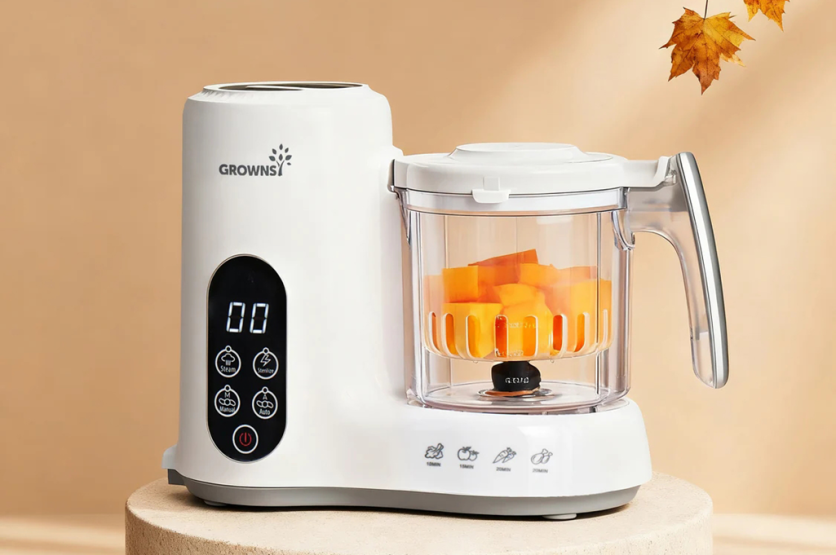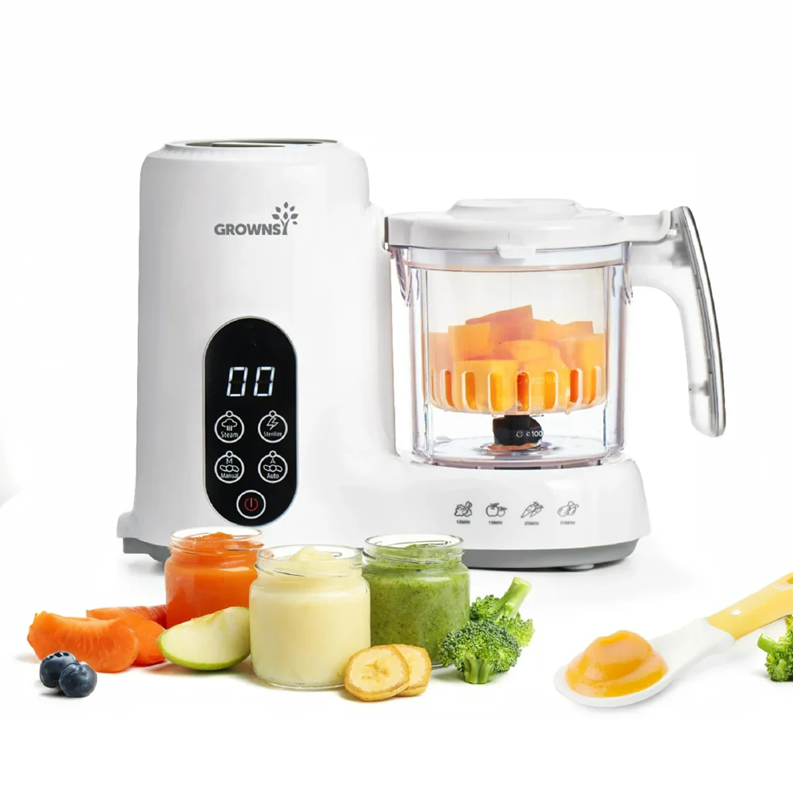
If you are a new parent, you know how meal times quickly become a juggling act. Deciding what your baby can eat, cooking, blending, cleaning up, it all adds up. By the end of the week, those small moments of rest feel rare. The question is not about adding more gadgets but about finding tools that make life easier and healthier for both you and your little one.
What Many Parents Don't Realize
In the United States, breast pumps, bottle warmers, and sterilizers are nearly universal. Baby food makers, however, are often seen as optional. Many parents confuse them with blenders or food processors and assume they are just another appliance to wash.
Traditional methods usually mean steaming food on the stove, transferring it to a blender, then scrubbing multiple containers afterward. This routine hides a few major challenges:
- Time pressure: After a long workday, the last thing parents want is a lengthy process of steaming, blending, and cleaning multiple tools.
- Nutrient loss: Boiling can strip away water-soluble vitamins like B and C, leaving meals less nourishing.
- Family involvement: Grandparents or babysitters may want to help, but complex kitchen routines discourage participation.
- Meal variety: As babies grow, their needs shift from smooth purées to chunkier textures. The extra effort of preparing multiple consistencies can hold parents back from experimenting.
Meal preparation is not just chopping vegetables. It includes steaming, blending, transferring, and cleaning. USDA data shows American households spend around 37 minutes per day preparing, serving, and cleaning up meals. For parents of infants, who already spend more than 2.5 hours per day on direct care such as feeding, soothing, and diaper changes, those extra minutes in the kitchen can feel overwhelming. When every minute counts, saving even 5 to 10 minutes per feeding adds up quickly.
Nutrition Matters More Than You Think
Boiling often feels like the simplest way to prepare baby food, but it comes with a cost. Water-soluble nutrients like vitamin C and B vitamins leach into the water and are lost. Steaming, in contrast, uses less water and gentler heat, which helps preserve those nutrients. Studies show that steamed vegetables retain significantly higher vitamin levels compared with boiled ones. For example, steaming broccoli helps preserve vitamin C and glucosinolates better than boiling.
For parents, this is not just about immediate health. Preserving nutrients also supports taste development, texture tolerance, and long-term healthy eating habits.
Texture, Variety, and Growth
Babies grow fast, and their food needs change just as quickly. What works as a smooth purée at six months may feel too soft by nine or twelve months. As they develop chewing skills, they benefit from chunkier textures. Yet traditional methods, which require steaming and then blending separately, create extra work. This discourages parents from providing variety and can make it harder to match meals with a child's development stage.
When routines are complicated, caregivers like grandparents or babysitters may also hesitate to help. Feeding consistency is easier when the appliance is intuitive and straightforward.
Where a Food Maker Makes a Difference
A thoughtfully designed baby food maker simplifies this process. By combining steaming and blending in one device, it reduces clutter and saves time. Parents can spend less time juggling pots and appliances and more time enjoying moments with their child.
Take GROWNSY's baby food maker, the Amazon #1 Best Seller in Baby Food Mills, as an example. It combines steam, blending, and sterilizing functions into a single device, saving both time and counter space. Its special nutrient-preserving steam basket ensures true steam cooking and helps protect essential vitamins B and C. The machine adapts as babies grow, handling silky purées for early months and chunkier textures later on, and is versatile enough to make smoothies or steamed vegetables for the whole family. For many parents, that means it stays useful long after the baby stage.

What Parents Can Do Now
If you're considering whether a baby food maker is worth it, try this checklist:
- Map your current process: How many tools do you use? How many minutes do you spend per feeding?
- Inspect nutrient loss: If you boil often, consider swapping to steaming where possible.
- Think about who helps: Is the machine simple enough that someone else could use it without your guidance?
- Plan for growth: Will the tool handle changing textures and help you attach to solid feeding milestones?
Final Thoughts
Parenting is full of trade-offs. Every parent wants their child to eat well, but there are only so many hours in a day. Baby food makers, though still under-recognized in many U.S. homes, offer a way to bridge the gap between wanting fresh, nutritious food and managing the daily realities of childcare.
If you feel pulled in too many directions—feeding, work, cleanup—there's value in considering a smart tool. Not because you need it to be a "perfect parent," but because you deserve support too. When the tool is well-designed, it doesn't just reduce workload: it safeguards nutrition, invites help, adapts as your baby grows, and gives you back moments—those precious, fleeting moments of calm.
ⓒ 2025 TECHTIMES.com All rights reserved. Do not reproduce without permission.





